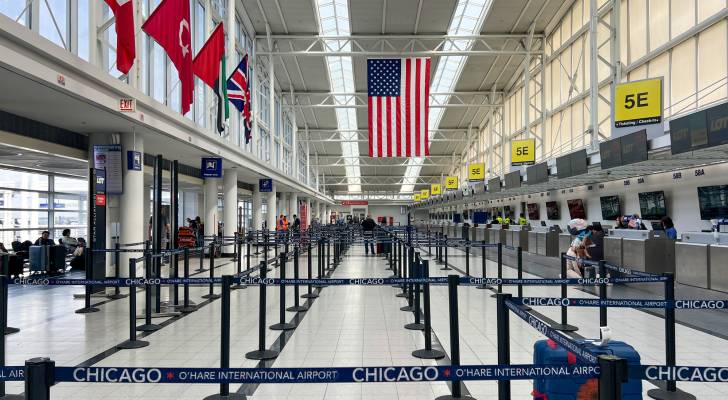‘We’re looking at a slowdown’: 3 warning signs point to a U.S. recession. Find out what the indicators are and how to protect your finances in the months ahead


The U.S. is not in a recession — yet. But with threats of high tariffs on U.S. imports, policy uncertainty, mass deportations and Department of Government Efficiency (DOGE) cuts, some economic observers believe the odds are rising. “We’ve got a real uncertainty problem, it’s going to be hard to fix that,” former Treasury Secretary Lawrence […]
‘Trump is steering our economy toward disaster’: Experts warn of stagflation, trade wars and a gutted SSA. Here are a few money moves you can make right now to protect your retirement
With talk of trade wars, fear of stagflation and slashes to Social Security staffing, you might be justifiably concerned about your retirement savings. Following the Fed’s policy meeting in March, Federal Reserve chair Jerome Powell said during a press conference that “recent indications … point to a moderation in consumer spending” as “surveys of households […]
My 83-year-old mother pays her rent on time, but she’s a hoarder — her place is crammed with old newspapers and other garbage. If the condo board finds out, can her housing be taken away?


Laura’s 83-year-old mother is still sharp, stays active and pays her bills on time. But Laura no longer visits because her mother doesn’t want to host anyone in her “messy” condo. The problem is, it’s more than a mess; her mom is a hoarder. Don’t miss I’m 49 years old and have nothing saved for […]
I’m 35 and sunk $95,000 into the S&P 500 in February — then lost $15,000 in the sell-off. My financial advisor wants me to ride it out, but how long should I have to wait?


Mark was nervous about taking the leap and investing in the stock market. As a 35-year-old health-care worker, he’d never had time to learn about the market — but with a lot of money sitting in the bank, he felt it was time to get some professional help and start making his money work for […]
Vanguard finds more Americans are treating their 401(k)s like emergency funds — here’s what to consider before making a hardship withdrawal


Life doesn’t always go as planned. Maybe you lost your job or you’re facing uninsured medical expenses. And maybe you’ve already run through your emergency savings. Don’t miss I’m 49 years old and have nothing saved for retirement — what should I do? Don’t panic. Here are 5 of the easiest ways you can catch […]
Is US exceptionalism on pause, fading or dead? Economist Mohamed El-Erian says it’s under ‘enormous pressure’ — here’s how much of your portfolio should be in international stocks and bonds


With the Trump administration’s political and economic policies shocking many around the world, some strategists are pondering if American exceptionalism is at risk. Don’t miss I’m 49 years old and have nothing saved for retirement — what should I do? Don’t panic. Here are 5 of the easiest ways you can catch up (and fast) […]
Finance professor bought Nvidia at US$0.48/share — but sold early and missed a life-changing gain of more than 25,000%. Here’s how investors can avoid his mistake 2025


Long-term investing can test even the most disciplined investors. With markets swinging on everything from AI breakthroughs to political headwinds, the temptation to act emotionally — especially during big wins or downturns — is real. Amos Nadler, a behavioural finance expert and former professor at Western University’s Ivey Business School, knows this first-hand. Years ago, […]
Air travel between the US and Canada is set to plunge 70%, and domestic tourism has also slowed — how to plan your trips as Trump’s policies hit travel demand


Many Canadians have decided not to travel in the U.S. as a trade war rages. Don’t miss I’m 49 years old and have nothing saved for retirement — what should I do? Don’t panic. Here are 5 of the easiest ways you can catch up (and fast) Gain potential quarterly income through this $1B private […]
Nearly 800,000 Oklahomans stressing over proposed Social Security cuts — as insiders warn of impending ‘system collapse.’ What to know about protecting your nest egg


About 800,000 Oklahomans depend on Social Security — and now they’re wondering how proposed Security Social cuts could impact their retirement. “Oklahomans want to hear and make sure that Social Security is protected and saved, not only for them, but their children, grandchildren,” Sean Voskuhl, AARP Oklahoma state director, told Oklahoma’s News 4 in a […]
Trump wants to ‘make America’s showers great again’ — but water bills are boiling over in parts of the country. 5 ways to save on your water bill


President Donald Trump says he’s going to “make America’s showers great again” by easing restrictions on water flow. Don’t miss I’m 49 years old and have nothing saved for retirement — what should I do? Don’t panic. Here are 5 of the easiest ways you can catch up (and fast) Gain potential quarterly income through […]